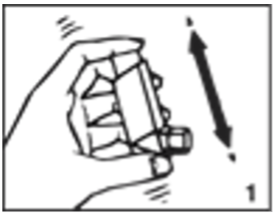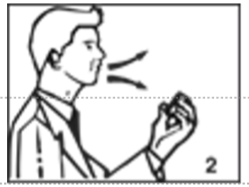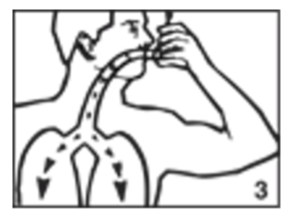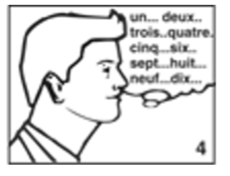> THERAPEUTIC INDICATION
It is a bronchodilator (it increases the calibre of the bronchial tubes) with a rapid action (it acts in a few minutes) and a short duration (4 to 6 hours) which is administered by inhalation (by breathing it in through the mouthpiece of the inhaler).
It is indicated in the event of an asthma attack or to relieve respiratory discomfort during asthmatic disease or certain bronchial diseases.
It may also be prescribed as a preventive treatment for exercise-induced asthma.
If you have asthma, depending on its severity, your doctor may prescribe RLIB alone or in addition to continuous background treatment with one or more other medicines, such as inhaled steroids.
It may also be prescribed for certain breathing tests (pulmonary function tests).
> DOSAGE AND METHOD OF ADMINISTRATION
Instructions for proper use
The inhaler does not have a dose counter. You cannot know how many doses are left in the inhaler. Therefore, it is recommended that you keep a second unused RLIB inhaler on hand to take over in case of an unexpected asthma attack or breathing difficulties when your first inhaler is empty.
Dosage: Always follow the dosage prescribed by your doctor. If in doubt, consult your doctor or pharmacist.
The recommended dose is :
In the event of an asthma attack or acute episode of respiratory discomfort: as soon as the first symptoms appear, inhale 1 to 2 puffs (see below “Instructions for use”).
This dose may be repeated a few minutes later if necessary
If the symptoms do not subside quickly, consult a doctor immediately.
In the event of a severe asthma attack, inhalations may be repeated at a rate of 2 to 6 puffs every 5 to 10 minutes until hospital treatment is required. In these situations, the use of an inhalation chamber is recommended to facilitate administration.
Prevention of exercise-induced asthma: inhale 1-2 puffs (see below “Instructions for use”), 15-30 minutes before exercise.
The daily dose should not usually exceed 8 puffs (see “Warnings and Precautions”). If you need to take more than 8 puffs a day of this medicine to relieve your respiratory symptoms, you should consult your doctor so that your treatment can be reassessed.
Mode of administration: Inhaled (only through the mouthpiece of the inhaler).
Read the inhaler instructions carefully: The effectiveness of this medicine depends partly on the correct use of the device. If necessary, do not hesitate to ask your doctor for a detailed explanation.
Instructions for use: When you use your inhaler for the first time or if you have not used it for more than 5 days, you must make sure that it works properly. To do this, remove the cap from the mouthpiece by gently squeezing on each side, shake the inhaler well, and press the canister to release two puffs of product into the air.
For routine use of your inhaler, after removing the cap from the mouthpiece by applying pressure to both sides of the mouthpiece:
Check that there are no foreign objects inside the inhaler, including the mouthpiece,
if you need a second puff, repeat the procedure (diagrams 2, 3, 4)
then, put the cap back on the mouthpiece and press firmly to put it back in position,
For hygiene reasons, the mouthpiece should be cleaned after use
Check your inhalation technique in front of a mirror:
If a large amount of product escapes through the nose or mouth, the following should be checked: either the metal canister was pressed before the start or after the end of the inhalation, or the inhalation was not deep enough.
Cleaning: Clean your inhaler at least once a week.
Separate the canister from the plastic applicator and remove the cap,
Rinse the plastic applicator thoroughly under warm water, but do not immerse the metal canister in water.
Rinse the plastic applicator thoroughly under warm water, but do not immerse the metal cartridge in water. Carefully dry the applicator with a dry cloth both inside and out,
Once this is done, replace the metal canister and cap.
Use of an inhalation chamber: If you have difficulty using the inhaler or if the medicine is for young children, your doctor may advise the use of an inhalation chamber. An inhalation chamber is a device that acts as a reservoir for the mouthpiece of the inhaler, making it easier to inhale the medicine without the need for hand-lung synchronisation so that inhalation can take place at the same time as the device is triggered. In this case, you should immediately inhale the medicine through the mouthpiece of the inhalation chamber after each triggering of the inhaler (or possibly after each series of two successive triggers) by squeezing the canister to release the aerosol inside the inhalation chamber.
Prescription medicine, ask your doctor for advice.






